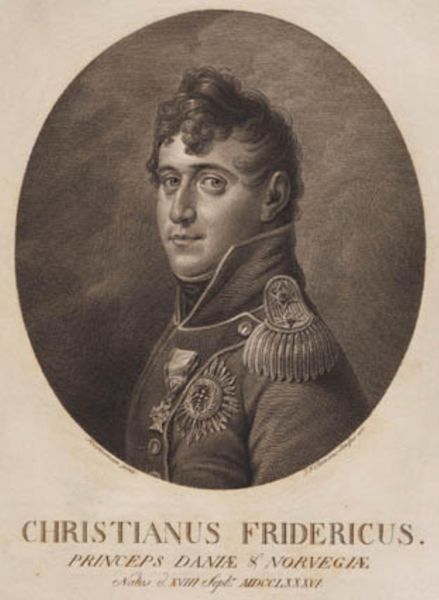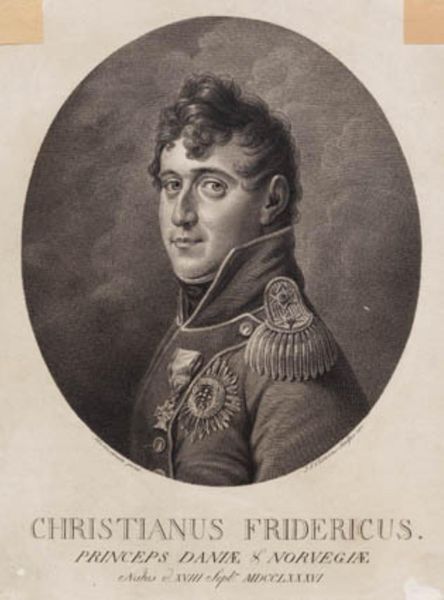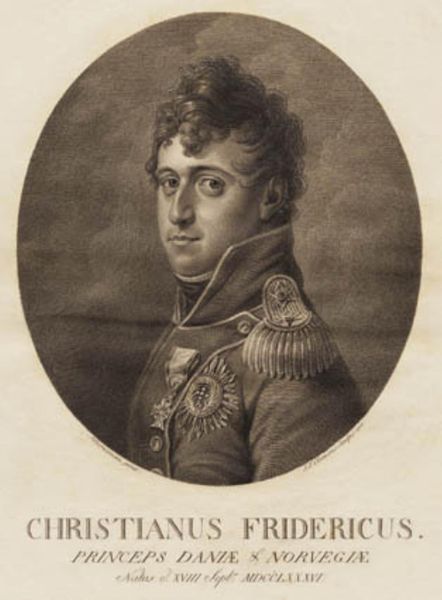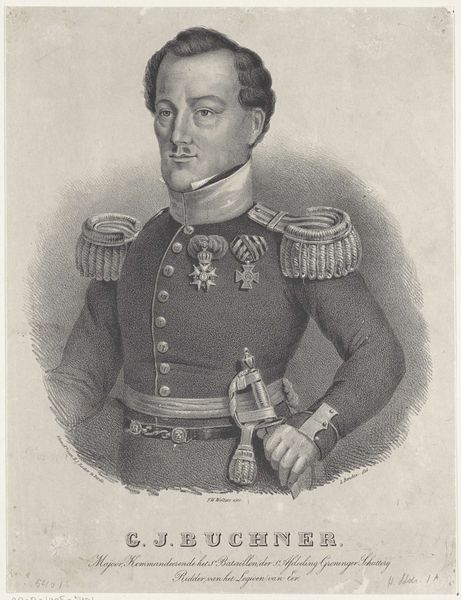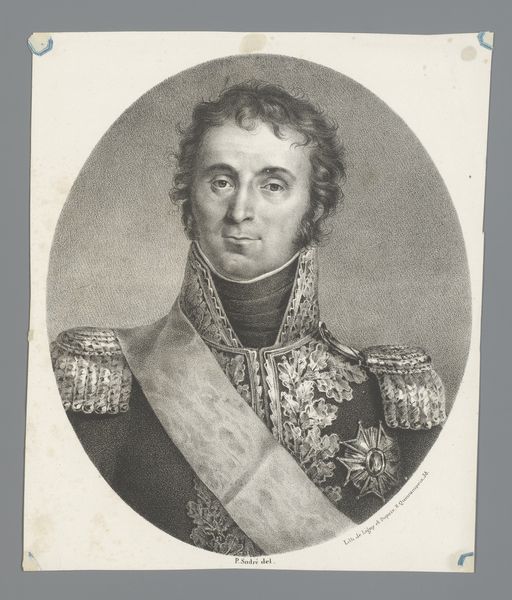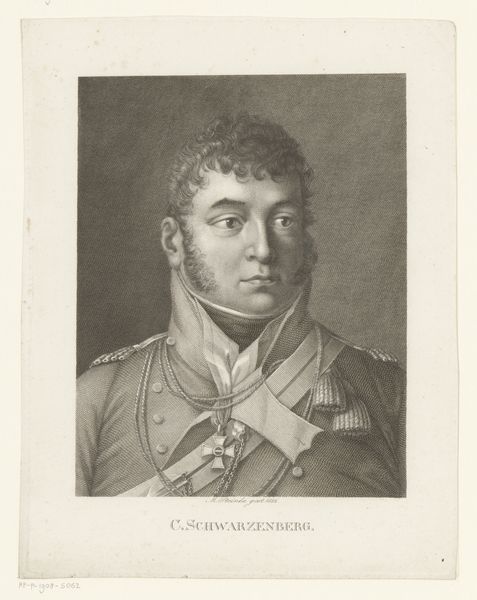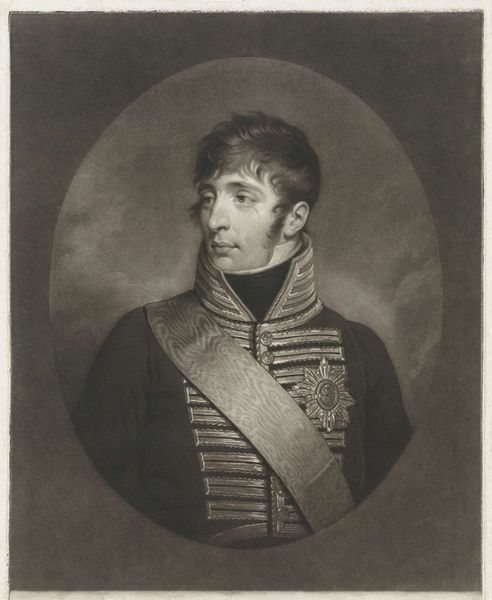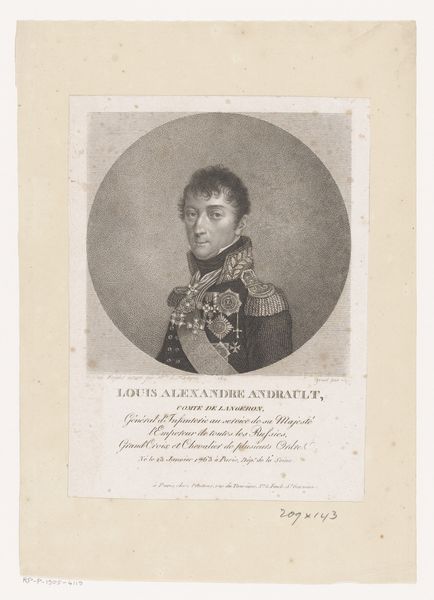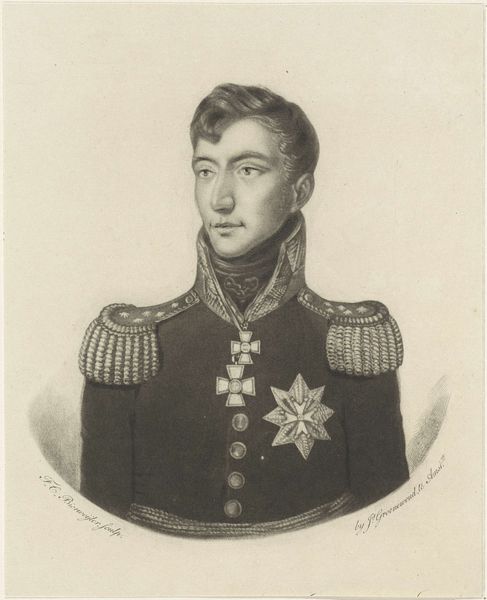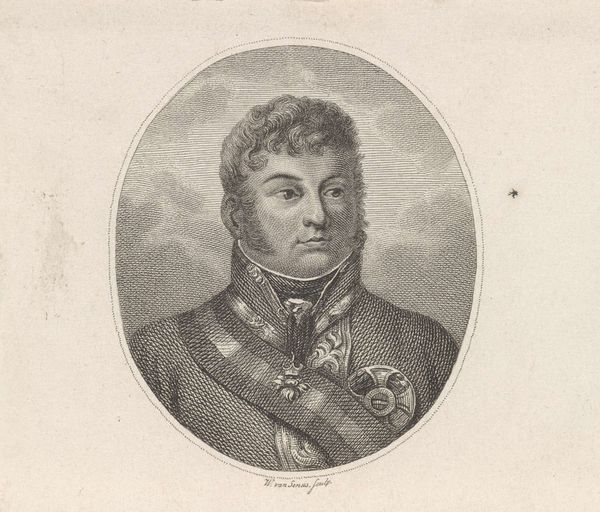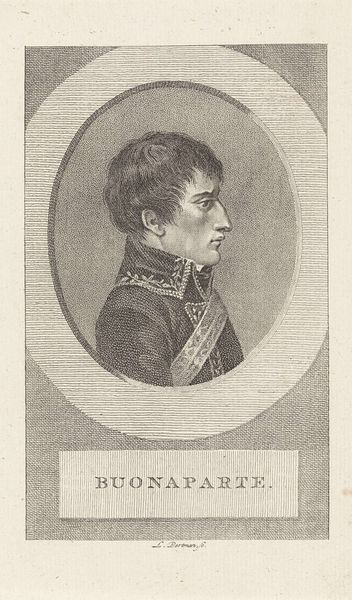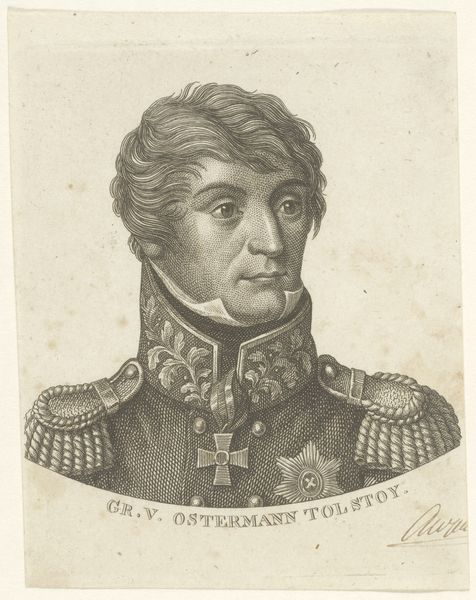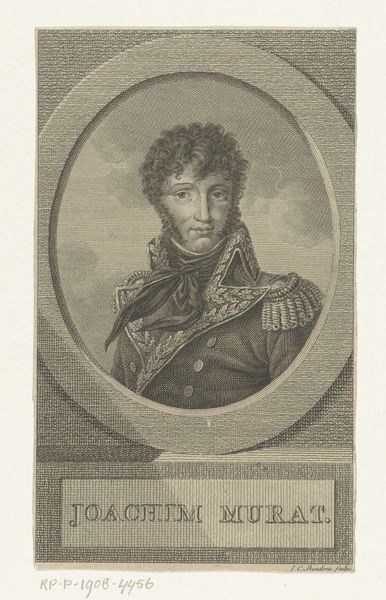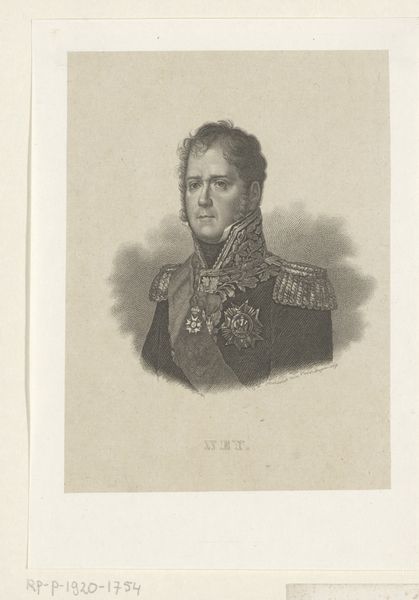
print, etching, intaglio, engraving
#
portrait
#
neoclacissism
#
portrait image
# print
#
etching
#
intaglio
#
old engraving style
#
portrait reference
#
portrait drawing
#
engraving
#
columned text
Dimensions: 386 mm (height) x 287 mm (width) (bladmaal), 312 mm (height) x 224 mm (width) (plademaal), 188 mm (height) x 160 mm (width) (billedmaal)
Curator: It has an imposing but somewhat melancholy air about it. What do you think? Editor: Agreed, there's a striking stillness. We're looking at J.F. Clemens' 1811 print, "Christian Frederik," currently held here at the SMK. This intaglio engraving, etched on what I assume to be a copper plate, presents us with a classic portrait bust, encased in an oval frame. Curator: An etching is, by its nature, a print - made for relatively wide circulation; the original can yield multiple copies to reach diverse viewers across geographical and social spheres. Who was he trying to reach with this piece? What political and cultural forces were at play when this work was created and consumed? What kind of patronage networks supported its creation? Editor: These questions move me to focus my visual analysis on the sharp lines, the contrasts Clemens establishes, using dark strokes to define the figure against a subtly graded background. Observe the detail in the prince's uniform: the textures of the braids, buttons, and decorations, especially in his epaulettes, are captured by an intricacy of fine, etched lines. Note also how this contrasts with the somewhat softer rendering of his face. Curator: Indeed! These accouterments underscore his princely status. One could even analyze Clemens’ piece as part of a larger, industrialized network for reproducing and distributing royal imagery - a subtle method for bolstering dynastic power. I wonder how the average citizen of the time would react to such an idealized depiction? Editor: Ideals aside, I cannot help but to notice how well-balanced the image seems; there is a structural harmony between the man's visage and regalia, enclosed within a geometric perfection - which suggests something timeless that outlasts the political landscape of his life and status. The play of light is exquisite. Curator: True. It speaks volumes about its socio-historical context as much as the artist’s aesthetic skill, though! These images could reinforce the structures they ostensibly documented. Considering Clemens as merely a cog within the machinery of state propaganda adds a whole other layer. Editor: Fascinating thoughts. All the same, it’s quite a study in portraiture, no? Curator: Agreed.
Comments
No comments
Be the first to comment and join the conversation on the ultimate creative platform.
